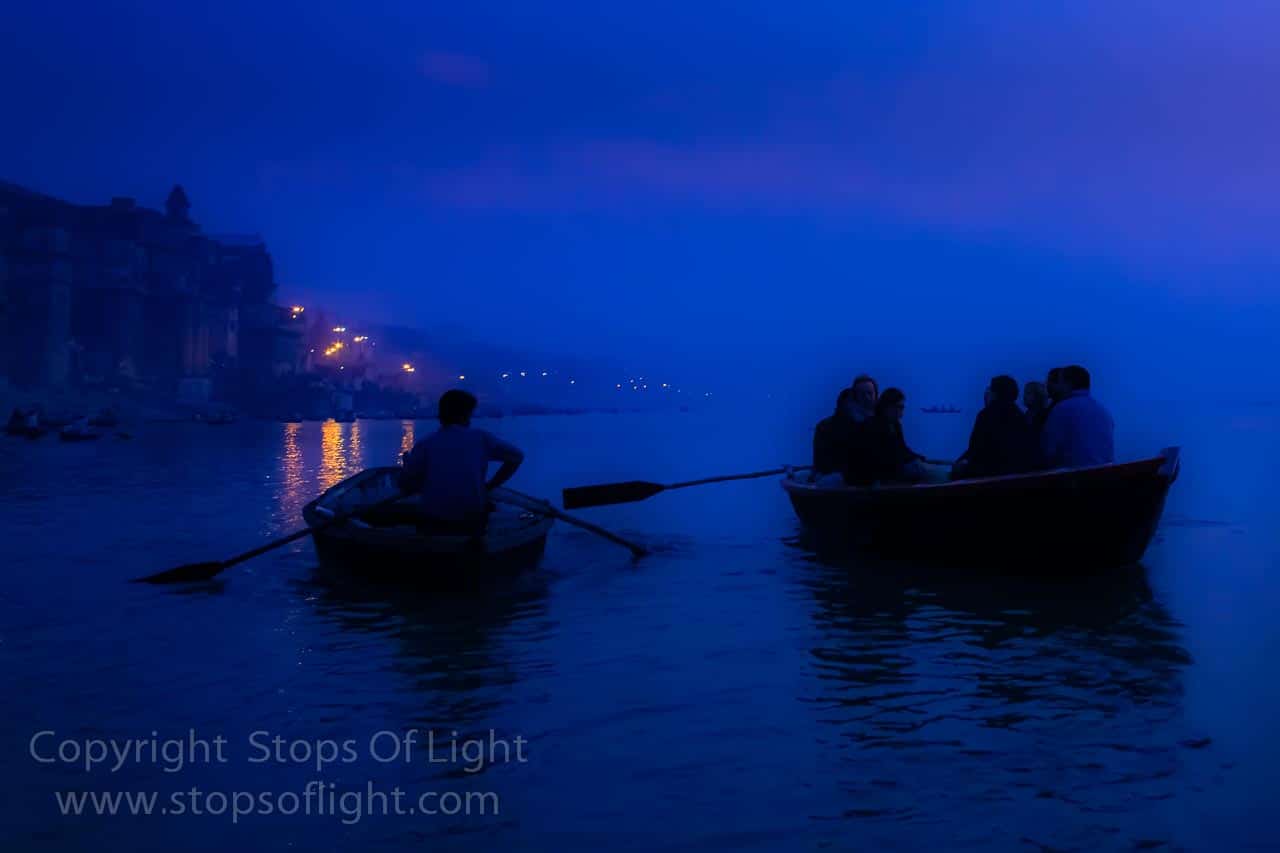It wasn’t. So Blue. I mean it was blue, but no so much.
But it really was Blue. As much as it comes out in the photograph. It really, really was as Blue. As I visualized it.
So there I am humming “Row, row, row your boat, gently down the stream” (well OK, that may seem a bit out of place considering it was the river Ganges at Varanasi) when I see something: streaks of reflected light in a mass of what was otherwise not-so-blue (or, should I say “really, really as Blue”?)
And a light goes on in my head.
You know what they say about light in photography. That it’s everything. I believe there’s something more important than the light that illuminates a scene. And if that something is missing, it really doesn’t matter just how gorgeous the light is, you’ll still end up making a ho-hum photograph.
I don’t believe in taking ho-hum photographs.
Switch on DSLR – check! Set White Balance to Tungsten – check! Compose – check! Trip shutter, and voila!
I just – to quote Ansel Adams – “Made a photograph”. Well almost, there’s just a tad bit left that I know I’ll need to do in the digital darkroom.
Did I mention that I set the White Balance to Tungsten? Oh yes, I did. The reasons thereof are because “It really wasn’t so blue”, but I really wanted it so Blue!
Setting the WB to Tungsten essentially nullifies the horrible yellow cast to an image that one ends up with while shooting in scenes illuminated by tungsten lighting. It does this by adding Blue. Put simply, WB set to Tungsten adds Blue to the image. Irrespective of the lighting condition.
And that’s what I was looking for: more blue. It really wasn’t so Blue. But it really was so Blue in my mind. I just needed to convert Thought to Image.
But adding blue to the entire scene resulted in the yellow reflections losing their “yellowness” to some extent. And I wanted that yellowness…
Load image in Lightroom – check! Add some more saturation to the yellow reflections – check!
And now, the image was well and truly made! Well actually, it was well and truly made even before I raised the camera. It was made in my mind. As I said, all that remained was converting Thought to Image.
Now, you may at this time be tempted to rush off to learn how to “Master Your DSLR”. Or maybe “Learn Lightroom”. But trust me, the role played by both my DSLR and Lightroom in the making of this image is less than ten percent (five percent would be more accurate).
The fact is that I could as well have taken this image on a point-and-shoot camera. Heck, I could have as well made this image on my cell phone. And if my point-and-shoot or cell phone didn’t have White Balance controls, I could have added more blue (and boosted the yellows) in post-processing. Put simply, “camera not matter!”
The fact is also that I could post-processed this image as I did in any photo-editing software. Heck, I could have done it on Snapseed on my cell phone, and ended up with the same effect. And I kid you not on this front. Put simply, “photo-editing software not matter!”
Which brings me to the bit about the most important thing in photography: it is the light. Not the light illuminating the scene, but the light that needs to go on in your head!
What matters is Your Mind: Its ability to perceive what lies in your field of vision. Its ability to recognize it (what you see for what it is. And to recognize it for what it can be.
What did I see? Or rather, what did my eyes look at? I’ve said it before: streaks of reflected yellow light in a mass of what was otherwise not-so-blue.
What did I see? The potential of color. And that’s that about “The Making of It Really Wasn’t So Blue”
